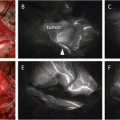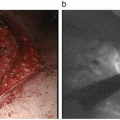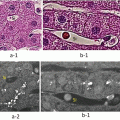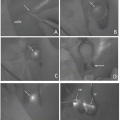Fig. 3.1
The appearance picture of the infrared observation camera system Photodynamic Eye (pde-neo)

Fig. 3.2
Basic composition of pde-neo
Table 3.1
Basic specification
Camera unit | Sensor: solid-state image sensing device | |
White LED and infrared auxiliary lighting function | ||
Hand operation function | ||
Contrast enhancement function, auxiliary lighting intensity control | ||
Controller | Contrast enhancement function | |
Video output | 2ch (BNC), 1ch (Y/C) | |
Outside dimension | Camera unit | About 80 × 182 × 80 mm (W × D × H) |
Controller | About 322 × 283 × 55 mm (W × D × H) | |
Mass | Camera unit | About 0.5 kg |
Controller | About 2.6 kg | |
3.3 Camera Unit
The camera unit is small, lightweight, and handheld (Fig. 3.3). Near-infrared wavelength excitation light of an LED (IEC class 1) is located at the front of the unit to provide an infrared auxiliary lighting function. A white LED is also attached for general lighting. The CCD camera has sensitivity in the visible to near-infrared wavelength domain, and the camera lens and optimal filter are built into a camera unit. Four switches on the camera unit allow handheld control over the infrared LED, white LED, and color image/fluorescence imaging. Connection of a remote control device (Fig. 3.4) allows control over infrared LED, white LED, selection of color image/fluorescence image, control of color display, contrast, and brightness, and equipment setup. Focus control is provided by turning the camera head.
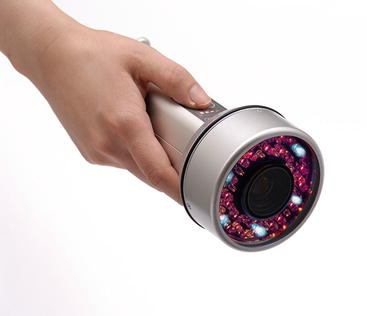
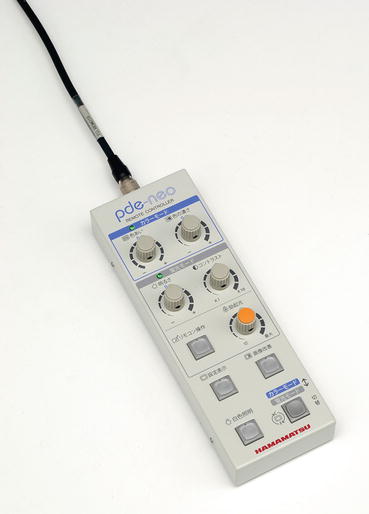

Fig. 3.3
Camera unit of pde-neo

Fig. 3.4
Remote controller of pde-neo
3.4 Controller Part
The controller of the pde-neo provides contrast enhancement function. The image output of the pde-neo is an NTSC signal, and two BNC terminals and one S-connector allow output to multiple external input devices, as well as one monitor or multiple handy cams or HDD recorders to save dynamic images. The contrast enhancement function provides brightness and contrast control. Contrast is the difference between intensity of the white and black parts on a screen. An increase in contrast will increase the brightness of the white display on the screen, although it is important for the luminance of the black part of the image not to change. It is the feature that the difference of control of intensity is emphasized. As brightness reflects signal intensity, it also reflects the degree of luminance of the whole screen display. If intensity is raised, the increase of luminance of the whole display will result in an increase in brightness of the white part, although the luminance of the black part is also increased.
Stay updated, free articles. Join our Telegram channel

Full access? Get Clinical Tree


